Tero is a Greek word that means “to care for”…
A Company’s Environmental, Social, and Governance (ESG) score can be significantly improved through leveraging a computerized maintenance management system (CMMS). By implementing sustainable practices and optimizing resource utilization, companies can minimize their carbon footprint, enhance their environmental performance, promote social responsibility, and strengthen corporate governance.
Here are several ways a company can use Azzier CMMS from Tero to improve its ESG score:
Equipment Optimization: Preventive maintenance planning ensures that equipment and machinery are regularly inspected, cleaned, and serviced according to manufacturer recommendations. Keeping equipment in optimal operating condition, minimizes energy waste caused by inefficient or malfunctioning equipment. Well-maintained equipment operates more efficiently, consumes less energy, and reduces greenhouse gas emissions.
Systematic Inspections: Preventive maintenance includes routine inspections of equipment, HVAC systems, electrical systems, and other energy-consuming assets. These inspections help identify and address leaks, faulty components, or suboptimal settings that can lead to energy waste. By proactively identifying and rectifying these issues, preventive maintenance prevents energy losses and reduces the carbon footprint associated with energy consumption.
Energy Audits: As part of preventive maintenance planning, companies can conduct regular energy audits to assess energy usage patterns and identify areas of improvement. These audits analyze energy consumption data, identify energy-intensive processes, and highlight opportunities for energy optimization. By addressing the findings of energy audits through preventive maintenance actions, companies can significantly enhance energy efficiency and reduce their carbon emissions.
Calibration and Optimization: Preventive maintenance planning includes calibrating and optimizing equipment and systems for maximum energy efficiency. This involves adjusting operating parameters, optimizing settings, and aligning equipment to meet energy efficiency standards. By fine-tuning equipment and systems, companies can minimize energy waste, reduce energy consumption, and lower their carbon footprint.
Replacement and Upgrades: Preventive maintenance planning also considers equipment replacement and upgrades when necessary. Outdated or inefficient equipment may consume more energy than modern, energy-efficient alternatives. By proactively identifying and replacing such equipment, companies can significantly improve energy efficiency and reduce their carbon emissions.
Energy Management Systems Integration: CMMS can be integrated with energy management systems (EMS) or building management systems (BMS). These systems monitor energy consumption in real-time, detect anomalies, and trigger maintenance notifications when energy usage deviates from expected levels. By linking both predictive and preventive maintenance modules with EMS or BMS, companies can respond promptly to energy inefficiencies, rectify issues, and maintain optimal energy performance.
Employee Training and Awareness: Training employees on energy-efficient practices and raising awareness about the importance of energy conservation will develop a green mindset within your workforce. By educating employees on energy-saving techniques, efficient equipment operation, and energy management best practices, companies can foster a culture of energy efficiency throughout the organization. Maintenance management software can schedule and track employee training programs, ensuring compliance with health and safety regulations. Engaged, well-informed employees contribute to reducing energy waste and minimizing the company’s carbon footprint.
Data-Driven Decision Making: Data collection and analysis drives informed decisions. By leveraging data from maintenance activities, energy audits, and equipment performance monitoring, companies can identify trends, patterns, and energy consumption outliers. These insights enable companies to optimize energy efficiency, prioritize maintenance actions, and allocate resources effectively. Artificial Intelligence is being used to aggregate asset data and maintenance history to bring the power of AI to bear on improving your company’s ESG score.
Waste Reduction and Recycling: Maintenance management software can enable companies to track and manage waste generation during maintenance activities. It can help identify opportunities for waste reduction, implement recycling programs, and ensure proper disposal of hazardous materials. By minimizing waste and promoting recycling, companies can improve their environmental performance.
Asset Lifecycle Management: Effective maintenance management software facilitates asset lifecycle management, allowing companies to optimize asset utilization and extend their lifespan. By implementing predictive maintenance techniques and timely repairs, companies can reduce the need for new equipment purchases, conserve resources, and minimize waste generation.
Supplier Collaboration: Maintenance management software can enhance collaboration with suppliers and contractors. Companies can ensure their suppliers adhere to sustainable practices, such as environmentally friendly materials sourcing, ethical labor practices, and adherence to health and safety regulations. Collaborating with responsible suppliers can positively impact a company’s social and governance aspects.
Compliance and Reporting: Maintenance management software can assist in ensuring compliance with environmental regulations and reporting requirements. It can help track maintenance activities, document compliance measures, and generate reports for regulatory agencies. Transparent reporting demonstrates a company’s commitment to governance and regulatory compliance.
Stakeholder Engagement: By leveraging maintenance management software, companies can enhance stakeholder engagement. They can communicate their ESG initiatives, share environmental performance metrics, and solicit feedback from stakeholders. Active engagement fosters trust, demonstrates accountability, and positively impacts a company’s ESG standing.
Computerized maintenance management systems have been in use for many decades providing cost savings, extending the useful life of assets, and improving employee and environmental safety. These well documented benefits effectively support industry’s current focus on improving ESG scores through minimizing environmental impacts, promoting social responsibility, and ensuring strong corporate governance.
Tero is a Greek word that means “to care for”, and that is at the core of everything we do. We founded our company with the mission of taking care of our customers by developing solutions that help them more easily maintain, track and manage their assets. As it turns out, we have also been taking care of our planet long before ESG became commonplace.





















































